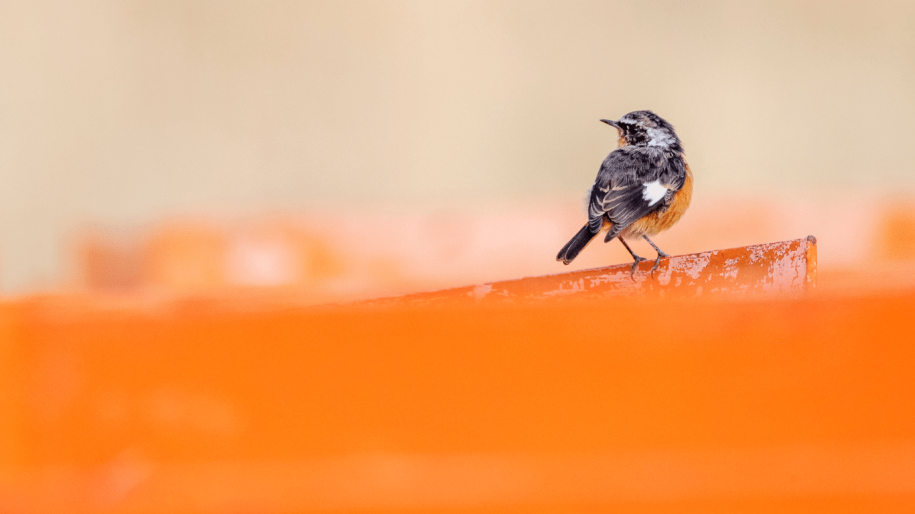Table of Contents
Morocco is a habitat of 350 species, with a large variety living in North Africa. There is a diversity of bird species, from neck flamingoes of the Atlantic shore to the small finches of the Mountain.
Atlas. Morocco country is a birdwatcher’s paradise for visitors from across the world. It would be beneficial to visit Morocco in the spring season and the start of winter in October. The best places to experience the variety of Morocco birds are the Sahara desert and Atlas Mountains.
Its variety of landscapes, such as forests, wetlands, deserts, and mountain peaks, offers a diversity of homes for a large variety of birds, from ordinary to rare. Here, we will cover the most enormous and unique Morocco birds for visitors worldwide.
Snake eagle
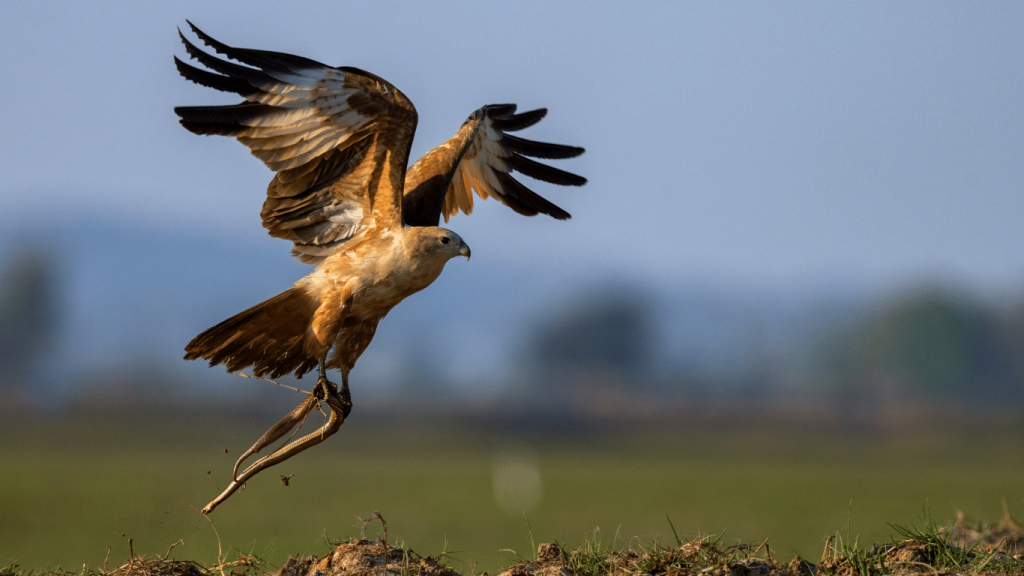
The Snake eagle is a great predator in North Africa, with great gliding in the air. It is found in large numbers with medium-sized bodies famous as a predator in the Sahara Desert and other parts of Africa. Moreover, The bird feeds on snakes, small mammals, and lizards, trapping with the help of its sharp talons.
It has developed its lifestyle according to the harsh habitat with light-feather than normal eagles. Its feathers help to decrease the resistance during flying, and its distinctive eyes with yellow colors help to catch prey from a large distance. Therefore, People love to see their prey-catching skills and visit Morocco due to its enormous variety and beauty of landscape.
Familiar kestrel
A good example of a morocco bird that developed in the harsh environment of North Africa is the kestrel. It is a popular predator for its capability to hover and catch the prey. The Familiar kestrel is a native of arid land such as deserts, steppes, mountains, and savannas. Furthermore, It feeds on rodents, insects, and other kingdom animals by trapping the feed with their fast flying.
Red Ostrich
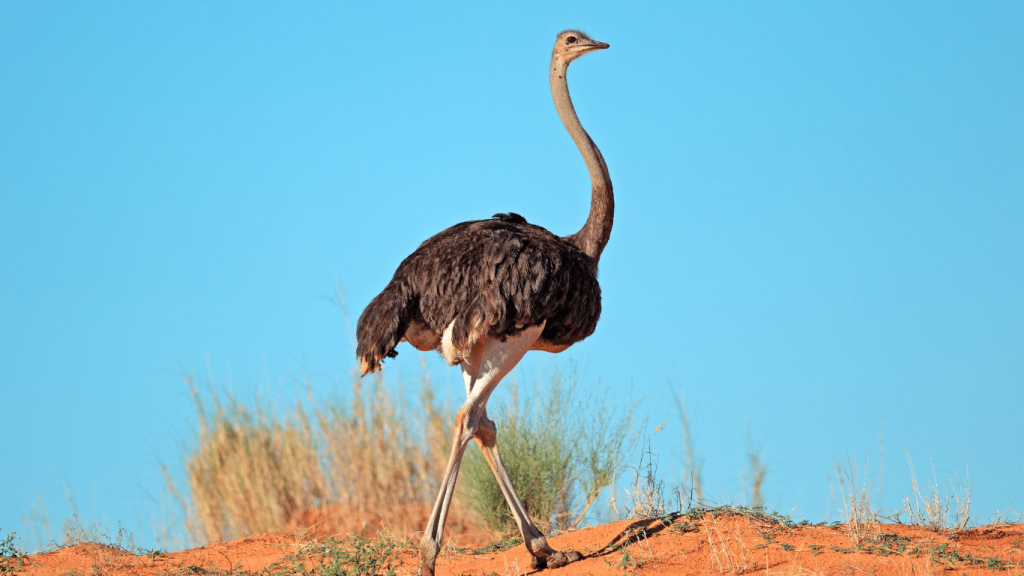
The red ostrich, which can grow to a height of 2.7 meters and a weight of 156 kilograms, is the biggest bird in the world. It mostly appears in Morocco’s Sahara Desert and other parts of Africa, where it depends on its extraordinary speed to survive. When necessary, the ostrich can push predators away with its powerful legs while it travels at up to 70 km/h. Additionally, it possesses a keen hearing sense that enables it to detect food or potential dangers at great distances.
Sandgrouse
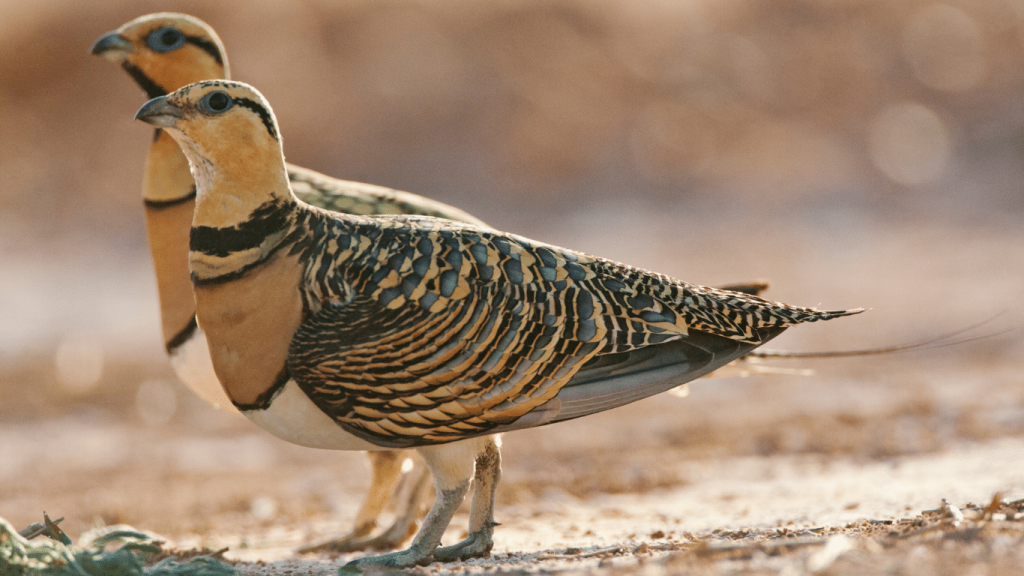
The excellent ability to travel miles in arid regions for the sake of food and water. Bird’s physical appearance is long legs, sharp beaks, and feathers to protect against weather harm, which are excellent tools to live in that environment. They migrate for food in the form of flocks ranging 200 hundred individuals. The feed menu also contains special forms of plants and insects. Usually, they live in the large colonies for better shelter from the snacks and foxes.
Medium size Marble duck
The medium-size waterfowl native to Northern Africa are famous as marble ducks due to the marble pattern on the feathers. The scientific name from Greek and Latin words meaning marble, duck narrow. It was a domestic bird in the past, but now its population has decreased due to habitat destruction. However, the wildlife department is trying to protect this amazing and cute bird so that visitors can enjoy watching the bird.
Bee-Eater
One of the most stunning and colorful species of birds is the bee-eater. They look beautiful from a distance thanks to their slim bodies, long wings, downturned beaks, and distinctive extended center tail feathers. Their feathers, which come in a variety of hues ranging from blues to greens to reds, sparkle as they soar through the air.
These magnificent animals can be found all throughout Africa, Asia, Southern Europe, Australia, and New Guinea. They consume small mammals like lizards and rodents in addition to various insects like flies and wasps. Bee-eaters gather in groups called colonies near marshes or rivers so they can readily seek food and stay close to one another for protection.
Skuas Seabirds predator
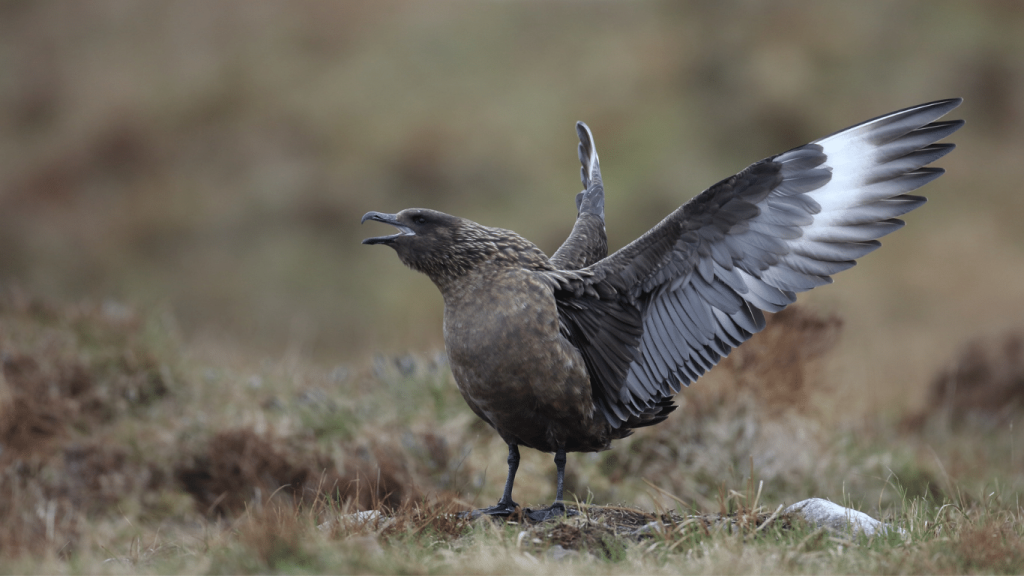
Skuas has seven species of seabirds predatory group relating to the genus Stercorarius. The skuas feed on fish, krill, and sea creatures, so they adopt coastline regions. The distinct character that enables it to fly in the sky to catch prey. Bird’s colors vary depending on the environment and age, but typically, the color is grayish brown on top and black streaks on the lower side. Size 24-40 cm largest marine bird species.
Procellariidae Sea Birds
The Procellariiformes suborder of birds includes the complex family of seabirds known as Procellariidae. These birds, which are also known as tubenoses, include shearwaters, fulmarine petrels, gadfly petrels, and prions.
They range in size from the tiny storm petrel, which is around 18 cm long, to the enormous albatross, which may grow to a length of up to 3 meters. Typically found close to coastlines or shores where, depending on the species, they eat fish, squid, and other marine creatures.
In addition to nesting inland during the breeding season, many procellariids spend most of their life at sea.
Phasianidae Family
The Phasianidae Family belongs to well-accepted sports birds, having 185 species and 54 genera. The family consists of the most stunning birds, such as chickens, turkeys, junglefowl, pheasants, and partridges. This large family was divided into two groups, and they had many of the same characteristics. The same features include strong legs, scratching leaves in search of food, insects, seeds, and other vegetation. Their unique colors attract tourists to visit Morocco country.
Threskiornithidae
Threskiornithidae is another large family with 36 bird species, and the birds are divided into two subfamilies named ibises and spoonbills. They own large bent beaks for catching fish with notched edges. It also captures prey like mudflats and other invertebrates like mollusks and crustaceans. The feed menu also includes plant matter, such as seeds and grains. Their beautiful colors and physical appearance, long neck, and beak make them most popular.
Old world orioles
The Old World is home to the family of passerine birds famous as Old World orioles. It consists of the original genus Oriolus as well as the genera piopios, figbirds, pitohuis, and piopios. Due to their distinctive traits and earlier splits for Oriolus, the African black-headed species have occasionally been excluded from this latter group. These vibrant birds can be recognized by their vivid yellow or orange plumage, which frequently has darker markings on the wings and head regions. However, certain species may also have blue body feathers or stripes.
Falcons And Caracaras
Falconidae family members, caracaras, and falcons known as prey birds, have bent beak, sharp talon, and eyesight features that makes them able to be successful predators. The falcons can fly at a speed of 200 meters per hour to search for food. At the same time, the caracaras travel by running and flying to feed on rats and rabbits. Its habitat includes grasslands, forests, deserts, forests, wetlands, and the top of buildings.
Red-Knobbed Coot
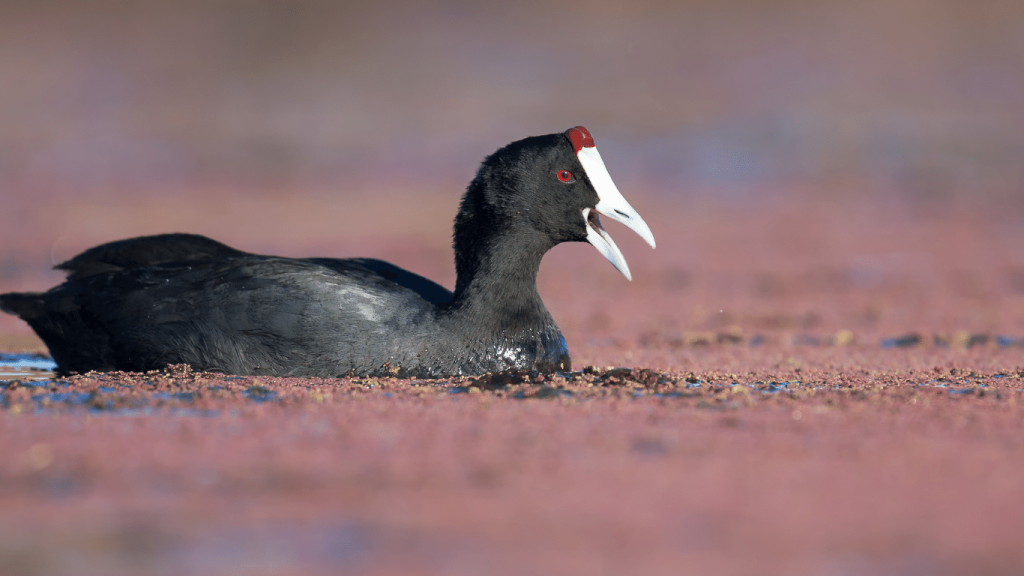
The Red-knobbed Coot is a species of rail and crake bird belonging to the Rallidae family. It is mostly present in parts of breeding around freshwater lakes and ponds. They build their nest from dead reeds near the water’s edge or on floating platforms, laying about seven eggs but can lay more depending on environmental factors.
It was formally described by Italian ornithologist Giovanni Antonio Scopoli in 1786 as Fulica cristata, which translates to “crested coot” due to its distinctive red knob located above the bill that it uses for display purposes during courtship rituals. The Red-knobbed Coot has a black body with a white beak and feet, making them quite easy to spot amongst other birds native to similar habitats.

